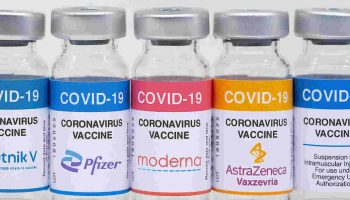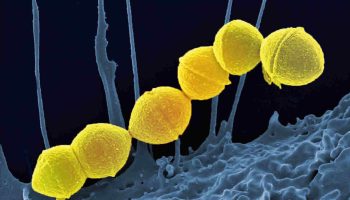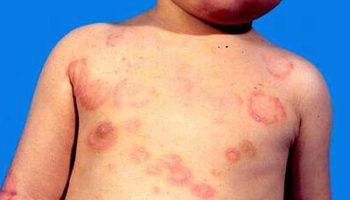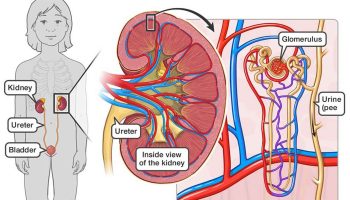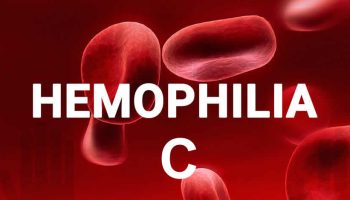What is Prinzmetal angina
Prinzmetal angina also called vasospastic angina or variant angina, is a known clinical entity characterized by chest pain at rest with transient ischemic electrocardiographic changes in the ST segment, with a prompt response to nitrates. These symptoms are attributed to coronary arteries spasm 1. Unlike typical angina – which is often triggered by exertion or emotional stress – Prinzmetal angina almost always occurs when a person is at rest, usually between midnight and early morning. These attacks can be very painful.
There is a decrease in blood supply to the heart muscle generating symptoms like chest pain. The coronary arteries may develop spasm as a result of exposure to cold weather, exercise, or a substance that promotes vasoconstriction as alpha-agonists (pseudoephedrine and oxymetazoline). Recreational drug use, for example, cocaine use, is associated with the development of Prinzmetal angina, especially when used concurrently with cigarette smoking 2.
Prinzmetal angina is rare, representing about two out of 100 cases of angina, and usually occurs in younger patients than those who have other kinds of angina.
Prinzmetal’s angina is a chronic condition that will need to be followed by your healthcare provider even though the prognosis is generally good.
Medicines can help control the spasms. Drugs such as calcium antagonists and nitrates are the mainstays of treatment.
The spasms tend to come in cycles – appearing for a time, then going away. After six to 12 months of treatment, doctors may gradually reduce the medication.
Prinzmetal angina causes
Prinzmetal angina pain is caused by a spasm in the coronary arteries (which supply blood to the heart muscle).
The coronary arteries can spasm as a result of:
- Exposure to cold weather
- Stress
- Medicines that tighten or narrow blood vessels
- Smoking
- Cocaine use
Several drugs such as ephedrine and sumatriptan can cause typical chest pain due to coronary spasm. Recreational drugs like cocaine, amphetamines, alcohol, and marijuana are also possible precipitating factors.
Environmental factors such as cold water can cause spasms in the coronaries. Valsalva maneuver, hyperventilation, and coronary manipulation through cardiac catheterization also can produce hyperreactivity of the coronaries.
The cause of the hyperreactivity of the coronary vessels is unclear but could be related to endothelial dysfunction and primary smooth muscle cells of the coronary vessels that might have impaired regulatory mechanism for vasoconstriction and vasodilation. Balances within the sympathetic and parasympathetic tone is also an important factor that regulates flow in the coronaries. Imbalance in this system can predispose exaggerated vasoconstriction under normal circumstance and during exposure of acetylcholine and methacholine 3.
Risk factors for Prinzmetal angina
Typical cardiovascular risk factors have not directly been associated with the presence of vasospastic angina, except for cigarette smoking and inflammatory states determined by high high-sensitivity C-reactive protein (hs-CRP) levels. A metabolic disorder such as insulin resistance has also been associated with vasospastic angina.
Prinzmetal angina symptoms
Patients with Prinzmetal angina present with the following:
- Chest pain or discomfort usually occurs while resting and during the night or early morning hours
- A chronic pattern of episodes of chest pain at rest that last 5 to 15 minutes, from midnight to early morningPain decreases with the use of short-acting nitrates.
- Typically, these patients have ischemic ST-segment changes on an electrocardiogram during an episode of chest discomfort, which returns to baseline on symptom resolution.
- Typically, the chest pain is not triggered by exertion or alleviated with rest as is typical angina.
- Often, the patient is younger with few or no classical cardiovascular risk factors.
Other vasospastic disorders, like Raynaud phenomenon or a migraine, can be associated with this subset of patients. Patients may complain of recent or past episodes with some symptom-free periods.
Prinzmetal angina complications
Prinzmetal angina complications may include:
- Arrhythmia
- Sudden death
- Myocardial infarction (heart attack)
Prinzmetal angina diagnosis
Prinzmetal angina is not an easy diagnosis to make and may require tests including cardiac catheterization with provocation.
Clinical history and an electrocardiographic (EKG or ECG) recording during a spontaneous episode are major elements in the clinical diagnosis of Prinzmetal angina 4.
The international study group of coronary vasomotion disorders known as COVADIS, created a diagnostic criterion to determine the presence of Prinzmetal angina. These include:
- Clinical response to nitrates during a spontaneous anginal episode.
- Transient electrocardiographic changes with concern for ischemia during a spontaneous anginal episode. These include ST-segment elevation or depression = 0.1 mV or new U waves.
- Evidence of coronary vasospasm during angiography.
Because of the lack of electrocardiographic evidence, further studies might be considered. The initial workup should be to evaluate the possibility of fixed obstructive coronary artery disease.
If appropriated, a noninvasive stress test can be performed. Most of these patients will have a normal stress test or negative for ischemia. However, a subgroup of patients (10% to 30%) can have exercise-induced spasms with electrocardiographic changes for ischemia that are not specific for Prinzmetal angina versus fixed coronary obstruction. This group of patients should undergo coronary catheterization to determine obstructive coronary disease. Also, a negative stress test with suspicion for coronary obstruction should be evaluated with cardiac catheterization.
During cardiac catheterization, coronary spasms can be visualized spontaneously or under drug induction.
Ergonovine, acetylcholine, and hyperventilation, can be used in the catheterization laboratory in an attempt to confirm the diagnosis of coronary vasospasm. These tests are warranted only when the diagnosis of Prinzmetal angina is suspected but not firmly established. At present, provocative pharmacologic testing is not frequently performed.
An ambulatory electrocardiogram also can be used to record transient electrocardiographic changes during acute spontaneous events.
It is important to remember that when a patient has acute chest pain or angina, the focus is to evaluate for possible fixed coronary obstruction.
Prinzmetal angina treatment
Treatment of Prinzmetal’s angina is focused on decreasing episodes of angina and preventing complications like myocardial injury and arrhythmia. Lifestyle modifications should be encouraged, especially smoking cessation. This is one of the critical interventions in reducing the frequency of episodes. Avoiding medications or drugs that can trigger coronary vasospasm, for example, cocaine, marijuana, and ephedrine-based products) is also important 5.
Prinzmetal angina medications
- Calcium antagonist plays an important role in the management of vasospastic angina. It is a first-line treatment due to a vasodilation effect in the coronary vasculature. Calcium antagonist is effective in alleviating symptoms in 90% of patients. Moreover, one study demonstrated that the use of calcium channel blocker therapy was an independent predictor of myocardial infarct-free survival in vasospastic angina patients.
- The use of a long-acting calcium antagonist is recommended to be given at night as the episodes of vasospasm are more frequent at midnight and early in the morning. A high dose of long-acting calcium antagonists like diltiazem, amlodipine, nifedipine, or verapamil are recommended, and titration should be done on an individual basis with an adequate response and minimal side effects. In some cases, the use of a two-calcium antagonist (dihydropyridine and non-dihydropyridine) can be effective in patients with poor response to one agent.
- The use of long-acting nitrates are also effective in preventing vasospastic events, but chronic use is associated with tolerance. In patients on calcium antagonist without an adequate response to treatment, long-acting nitrates can be added.
- Nicorandil, a nitrate, and K-channel activator also suppress vasospastic attacks.
- The use of beta-blockers, especially those with nonselective adrenoceptor blocking effects, should be avoided because these drugs can aggravate the symptoms.
- Treatment with guanethidine, clonidine, or cilostazol has been reported to be beneficial in patients taking calcium channel antagonists. However, these drugs are not well-studied in this setting.
- The use of fluvastatin has been shown to be effective in preventing coronary spasm and may exert benefits via endothelial nitric oxide or direct effects on the vascular smooth muscle.
Prinzmetal angina prognosis
In general, the long-term prognosis for Prinzmetal variant angina is good if patients get adequate treatment 6. Overall, 75% of patients can be free of myocardial infarct (heart attack) at 5 years 6. The factor that might independently determine the free infarct survival includes the presence and severity of pre-existing coronary stenosis, the number of vessels with hyperreactivity or spams, and the use of calcium channel blockers. Half of the patients with angina will have persistent symptoms.
Half of the patients with Prinzmetal variant angina will have recurring symptoms, even during treatment, within the first 3 years after onset. The development of arrhythmias with the episodes of Prinzmetal variant angina has been associated with a poor prognosis, with the main association with ventricular fibrillation and sudden cardiac death 7.
- Picard F, Sayah N, Spagnoli V, Adjedj J, Varenne O. Vasospastic angina: A literature review of current evidence. Arch Cardiovasc Dis. 2019 Jan;112(1):44-55[↩]
- Swarup S, Grossman SA. StatPearls [Internet]. StatPearls Publishing; Treasure Island (FL): Jan 31, 2019. Coronary Artery Vasospasm[↩]
- Castelein T, Tavernier R, Muyldermans L. Prinzmetal Angina can kill twice. Acta Cardiol. 2018 Jan 03;:1-2[↩]
- Sueda S, Kohno H, Ochi T, Uraoka T. Overview of the Acetylcholine Spasm Provocation Test. Clin Cardiol. 2015 Jul;38(7):430-8.[↩]
- Sueda S, Izoe Y, Kohno H, Fukuda H, Uraoka T. Need for documentation of guidelines for coronary artery spasm: an investigation by questionnaire in Japan. Circ. J. 2005 Nov;69(11):1333-7[↩]
- Rodriguez Ziccardi M, Hatcher JD. Prinzmetal Angina. [Updated 2018 Dec 19]. In: StatPearls [Internet]. Treasure Island (FL): StatPearls Publishing; 2019 Jan-. Available from: https://www.ncbi.nlm.nih.gov/books/NBK430776[↩][↩]
- Kim HL, Kim J, Kim HJ, Lim WH, Lee JY. Incidence and factors associated with mortality in 2,476 patients with variant angina in Korea. Sci Rep. 2017 Apr 06;7:46031[↩]

